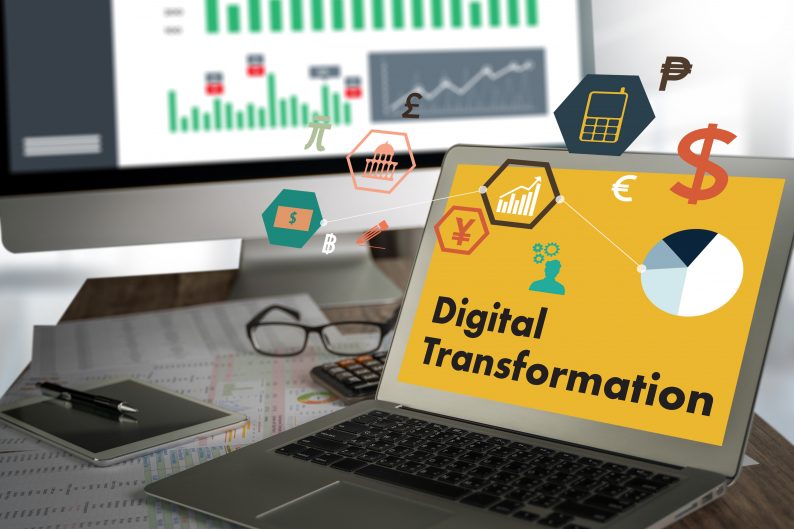Everybody is talking digital transformation: How to not get left behind
12 May 2020 | by Brett Mundell
If business success depends on digital transformation, you don’t want to miss out. Discover why digital transformation can’t be ignored and what’s involved.
Digital transformation may be a buzzword, but it’s an important idea that’s not going away. In fact, digital transformation has been the number one concern of Australian CEOs for the past three years, according to KPMG’s annual survey of the C-suite.
The concept is front of mind for leaders in the business sphere for a good reason. It’s predicted that within the next few years, up to 80 percent of revenue growth will come from digital operations and offerings.
Business owners and executives in small and mid-sized companies need to understand and embrace digital transformation to remain competitive and profitable in our increasingly global, interconnected, and the digital economy.
Part of the challenge for SMEs is truly grasping the imperative to transform their business through digital innovation, and then determining what kind of approaches, systems, and technologies will ensure they don’t get left behind?
What is digital transformation and what’s the urgency to transform?
The editor of the Information Age website, Nick Ismail, recently offered this clear definition of digital transformation, “…what it boils down to: is changing how a business interacts with customers and employees using technology; and also using technology to significantly improve internal processes, by making them more efficient.”
It’s a shorthand way to articulate the process of continually creating value for customers using technology. The ‘digital’ aspect of what drives a business’ transformation will vary—it might be the product/service you offer, how you offer it, or how you engage with and respond to customers (often all three).
Digital transformation doesn’t have a fixed start and endpoint—technologies continue to emerge that can be applied in new ways to refine how you operate or the customer experience
The fact that technology changes so rapidly is also the reason that you shouldn’t wait to begin your transformation. Right now is the right time to invest in better ways of working, new business models, and more cohesive customer journeys—underpinned by digital networks and platforms.
Companies that delay digital transformation will be surpassed and superseded by those with the right systems, skills, and data at their disposal. Harnessing technology fuels disruptive innovation—it’s what has enabled upstart competitors to displace market-leaders in many industries.
Not even the emergence of COVID-19 is cause to put off digital innovation. Quite the opposite. The coronavirus pandemic has demonstrated how companies that moved early are better prepared to work remotely, leverage the cloud, sell online, provide on-demand services, and deliver virtual experiences.
What’s required to make transformation effective?
So, digital transformation is essential—but what approaches support a successful evolution? You’ll want your transformation to be organisation-wide, which means that your people, processes and business systems will play a critical role.
Here are three key things to keep in mind:
1. Digital effectiveness dovetails with leadership capability
A global study by MIT found that companies with more digitally savvy leaders outperformed the rest on growth and valuation by more than 48 percent. They defined a digitally savvy leader as ‘someone with an understanding, developed through experience and education, of the impact that emerging technologies will have on businesses’ success over the next decade’.
For businesses of any size, it pays to strengthen your understanding of, and commitment to, digital transformation in order to make good decisions and capitalise on any changes you make.
Obviously, technical and project management capacity within your business also makes a difference. Lack of people skills is the key factor holding back digital transformation in many businesses.
Of course, some of these gaps might be bridged by outsourcing. However, it’s also important that the people you choose to deliver IT projects—external suppliers and consultants—have a clear understanding of digital transformation and its benefits, in addition to technical expertise, experience, and excellent communication and listening skills.
2. Systems must practically support your team to work well
Many organisations are driven to transform digitally by a desire to create more mobile, frictionless, and personalised experiences for customers. Being able to anticipate and exceed customer expectations can be enhanced with digital tools.
But the people working behind the scenes—your employees—matter even more. Putting customers first across every touchpoint in your business can only be achieved if your team has what they need to do their jobs well.
For example, how can you deliver an online order quickly unless your warehouse is functioning smoothly? You can’t. That’s why you need to start your digital transformation with the systems that allow you to provide a high-quality end-to-end product or service.
Research backs this up. A study that compared multiple pathways to achieving digital transformation found that employees suffer from increased work complexity when companies prioritise customer-oriented capabilities over operational capabilities. The best approach to improve the employee experience as they deliver on your transformation is to start with core operational needs and then gradually add customer-oriented capabilities.
3. The best technologies deliver actionable insights
Improving how you run your business and interact with customers is often contingent on having the right information at the right time. One of the goals of your digital transformation should be to ensure that people at every level of your organisation can make more informed decisions, more confidently.
Consider every technology investment with this in mind. Ask yourself:
- Will this help me to capture and make better sense of my business and customer data?
- Will this ensure the right people can access and apply info when it’s needed most?
- Will this help me gain a deeper insight into what’s working and where I need to improve?
- Can I trust the security and accuracy of the data, the analytics, and the outputs?
The technical capabilities of a technology pale into insignificance compared to the quality of the insights you can extract—meaningful information or recommendations underpin better day-to-day actions and strategic planning. Look for solutions that reliably leverage technologies such as the cloud, automation, AI and so on—to enable data-driven decision-making.
Are your current business systems a launchpad for transformation?
To transition to a continually evolving (and improving) business, sophistication and flexibility are required. Legacy systems are a known barrier to effective digital transformation because they’re often built on out-of-date technologies or applied in a haphazard way across a business.
So, while you may already be using digital tools—often those tools don’t provide a joined-up picture of what’s happening operationally, your supply chain, or your customer journey.
That’s why the first step for many SMEs is investing in better business systems. They choose enterprise systems that bring together core functions, data, and workflows in order to provide a solid foundation for digital transformation.
Modern ERP systems are built on cutting-edge infrastructure, can be deployed in the cloud for mobility and scalability, and can easily be extended and integrated with other data sources and applications to create a seamless digital ecosystem.
By investing in an innovative enterprise solution, you can more effectively lead digital transformation efforts, support your team to maximise their productivity, get powerful analytics for better decisions, and stay ahead of the competition.
Ready to get started? Why not take advantage of our free requirements analysis service to help clarify your business goals and technology needs? Get in touch.

Brett has more than 20 years of business software sales and company management experience. Brett has been involved in more than 300 ERP projects. His passion is customer satisfaction, making sure every client is more than just satisfied. Brett wants our customers to be driven to refer their friends and peers because we offer the best services and technology available and because we exceeded their expectations.





Leave a comment